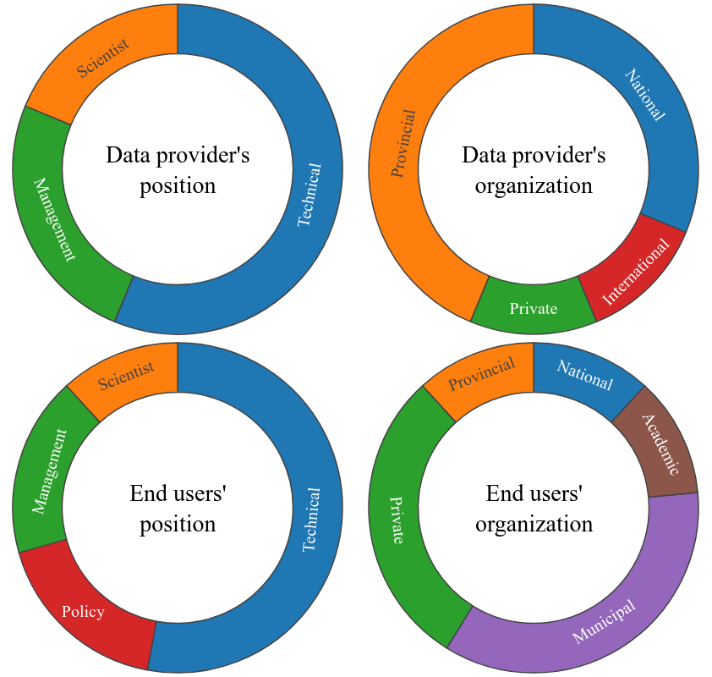Toward climate resilient infrastructure: standard guidance for weather and climate information
A complete state-of-play report on how climate change is included into infrastructure design in Canada.
Project details
Principal(s) investigator(s)

Context
Infrastructure often relies on hydroclimatic data at the design stage: buildings must resist snow and wind loads, sewage systems must evacuate intense rain and railways need to support very high temperatures without buckling. Design values for infrastructure design are mostly derived from Environment and Climate Change Canada’s (ECCC) climate information database.
However, there are potentially several additional weather and climate data sources, both public and private, that collect information that could also be useful. This information is not always captured into design values for infrastructure because of quality concerns, lack of compatibility, lack of resources or lack of standardized guidance to consider climate change.
Climate change information will become increasingly important as the climate warms up. Inclusion of more comprehensive information will contribute to improve infrastructure design and increase resilience to climate change impacts.
Objective(s)
-
Provide a comprehensive overview of the way weather and climate data is collected, managed and used across Canada;
-
Document how this information is being used to derive infrastructure design values; and how future climate projections are being factored into design values;
-
Identify gaps and provide potential standards-related options for addressing them.
Methodology
-
Design of two work packages, the first one on observational data and climate product providers, and the second one covering the engineering perspective.
-
Comprehensive literature review and semi-directed interviews with experts in Canada and at the international level. Several experts were consulted, covering most regions in Southern Canada (Atlantic provinces, Québec, Ontario, Prairies, British-Columbia) and various organizational roles (e.g. policymakers...).
-
The data collection also explored different sources for weather information (e.g. station data, radar data, climate model data, etc.). Characteristics of the interviewees are shown in Figure 1.
Results
This project provides an overview of the way weather and climate data is collected, managed and used across Canada, the way infrastructure design values are developed based on this information as well as how climate change is being factored in. The study identified gaps and provided potential standards-related options to address them and key stakeholders were engaged throughout the project to help identifiy and target which options were priorities. Key stakeholders were engaged in the project to identify priorities.
The study outlines the following recommendations
-
Develop a national data portal to catalogue relevant weather, climate and earth-observation data, along with user-oriented material. The portal would leverage planned and existing initiatives, such as the Network of Networks, the Canadian Centre for Climate Services and the Federal Geospatial Platform.
-
Develop guidelines and best practices to help engineers cope with climate uncertainty.
-
Develop climate change design parameters for engineers, inspired by the American Society of Heating, Refrigerating and Air-Conditioning Engineers (ASHRAE)’s Climatic Data for Building Design Standards (169-2013) in the United States.
Standards Council of Canada plans to undertake the following activities:
-
Create an inventory of existing weather data monitoring networks across Canada and develop an engagement strategy with those weather station owners committed to a standardized approach to data collection, monitoring and usage.
-
Develop guidance related to the use of climate information including standardizing methods, processes and/or techniques for including climate information into standards development; using climate information to inform infrastructure decision-making; establishing a minimum quality level of information/data that is acceptable for use in infrastructure design; and recognizing and communicating uncertainty associated with selected climate considerations.
-
Update existing information, guidelines, and standards to reflect climate change considerations.
-
Ensure Canadian accredited standards development organizations have access to the climate information required to embed climate change considerations in relevant standards.
-
Establish a process for reviewing climate service tools and their utility in the standardization process that takes place outside of the federal government.
-
Facilitate efforts to update and/or standardize approaches for determining values related to extreme precipitation, for instance for the development, interpretation and use of rainfall intensity-duration-frequency (IDF) information.

Figure 1. Characteristics of the 33 interviewees contacted for this report: 16 data providers and 17 end users
Benefits for adaptation
Benefits for adaptation
A complete state-of-play report on how climate change is included into infrastructure design in Canada.
Recommendations on innovative techniques to consider climate change into the decision making process for developing or rehabilitating infrastructure.
Identification of gaps and potential standards-related options for addressing them.
Scientific publications
Funding
